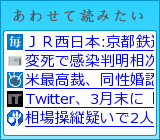2月に読んで頂いたWSでHANDSの修了生と共にfollowership,ボスマネジメントという概念を取り上げました.
リーダーではなく,リーダーをサポートする側としてどのように考えるか,どうすればうまくいくかということに焦点を当てました.
第4回 若手家庭医のための家庭医療学冬期セミナー 2/ 14-15/09
東京大学
「リーダーシップとフォロワーシップ~リーダーにない立場から、如何にチーム/組織に影響力を与えるか~」
菅野 哲也 ・ 千葉 大 氏と
http://jafm.org/winter/index.html
http://jafm.org/wakate/touki04/index.html
引用元になった本から簡単なまとめを作ったので公開しておきます.
上司に「仕事させる」技術—そうか!ボス・マネジメント! 上司の7つの役割
なぜうまくリーダーを手名付ける必要があるかは言うまでもないとは思いますが,自らの健康にも関係しているのです(これも想像に難くないと思いますが)
Anna Nyberg et al . Managerial leadership and ischaemic heart disease among employees: the Swedish WOLF study. Occup Environ Med. Published Online First: 27 November 2008
abstract
full text (pdf)
ABSTRACT
Objective: To investigate the association between
managerial leadership and ischaemic heart disease (IHD)
among employees.
Methods: Data on 3122 Swedish male employees were
drawn from a prospective cohort study (WOLF). Baseline
screening was carried out in 1992–1995. Managerial
leadership behaviours (consideration for individual
employees, provision of clarity in goals and role
expectations, supplying information and feedback, ability
to carry out changes at work successfully, and promotion
of employee participation and control) were rated by
subordinates. Records of employee hospital admissions
with a diagnosis of acute myocardial infarction or unstable
angina and deaths from IHD or cardiac arrest to the end of
2003 were used to ascertain IHD. Cox proportionalhazards
analyses were used to calculate hazard ratios for
incident IHD per 1 standard deviation increase in
standardised leadership score.
Results: 74 incident IHD events occurred during the
mean follow-up period of 9.7 years. Higher leadership
score was associated with lower IHD risk. The inverse
association was stronger the longer the participant had
worked in the same workplace (age-adjusted hazard ratio
0.76 (95% CI 0.61 to 0.96) for employment for 1 year,
0.77 (0.61 to 0.97) for 2 years, 0.69 (0.54 to 0.88) for
3 years, and 0.61 (0.47 to 0.80) for 4 years); this
association was robust to adjustments for education,
social class, income, supervisory status, perceived
physical load at work, smoking, physical exercise, BMI,
blood pressure, lipids, fibrinogen and diabetes. The dose–
response association between perceived leadership
behaviours and IHD was also evident in subsidiary
analyses with only acute myocardial infarction and cardiac
death as the outcome.
Conclusion: If the observed associations were causal
then workplace interventions should focus on concrete
managerial behaviours in order to prevent IHD in
employees.













0 コメント:
コメントを投稿